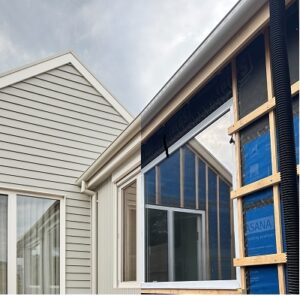How wireless communication systems Drive Costs in Smart Facilities
Smart facilities rely on advanced technologies to improve efficiency, safety, and connectivity. While these systems promise long-term value, they also...
Smart facilities rely on advanced technologies to improve efficiency, safety, and connectivity. While these systems promise long-term value, they also introduce new cost drivers that decision-makers often overlook. Managing these costs effectively requires an understanding of the technology infrastructure at the heart of smart operations.
One of the most significant contributors to both operational efficiency and expenses is Wireless communication systems. The design, deployment, and ongoing management of these systems directly affect how resources are allocated and how budgets are controlled within modern facilities.
Why Wireless Networks Matter in Smart Facilities
Smart facilities integrate IoT devices, automation tools, and energy management systems. Without strong wireless networks, these systems cannot communicate or share data effectively. That makes reliable connectivity a non-negotiable foundation for operations. However, the cost of ensuring reliability across a facility is often higher than anticipated.
Infrastructure Costs That Scale Quickly
Hardware Investments
Smart facilities require a combination of access points, sensors, controllers, and routers. Large campuses, warehouses, or hospitals often need hundreds of devices to achieve seamless coverage. Each device must be tested, installed, and integrated, creating high upfront costs.
Cabling and Power Requirements
Even though wireless is the focus, cabling for backhaul connections and powering devices adds hidden expenses. Larger facilities may require extensive electrical upgrades to support the infrastructure.
Environmental Challenges
Warehouses with metal shelving, hospitals with thick walls, and office towers with reflective glass each present unique challenges. Addressing these with additional equipment or specialized designs increases total costs.
Ongoing Maintenance and Monitoring
System Upgrades
Wireless networks must evolve with changing technology standards. As protocols advance, organizations face recurring expenses to replace or upgrade outdated equipment.
Security Patching
Wireless networks are vulnerable to cyberattacks. Regular software updates, intrusion detection systems, and cybersecurity services are essential, adding continuous costs to the budget.
Performance Monitoring
Smart facilities rely on uninterrupted connectivity. Monitoring tools and teams are required to detect performance issues, optimize bandwidth, and minimize downtime.
Hidden Costs Linked to Device Density
IoT devices multiply rapidly in smart facilities. Energy meters, motion sensors, and security cameras all demand wireless connectivity.
- Increased device density can overload existing access points, forcing investments in more powerful infrastructure.
- Bandwidth demand grows exponentially, raising the need for advanced traffic management solutions.
- Poor planning leads to performance bottlenecks that are costly to resolve later.
The more devices a facility integrates, the more carefully wireless resources must be scaled and managed.
Regulatory and Compliance Costs
Many industries, especially healthcare and pharmaceuticals, operate under strict regulations. Wireless networks must comply with data security and privacy standards.
- Compliance audits require detailed records of network activity, security measures, and equipment certifications.
- Failure to comply can result in fines, operational delays, or reputational damage.
- Investing in compliance frameworks upfront often reduces penalties but adds to overall costs.
Energy Consumption and Sustainability Challenges
Wireless infrastructure draws significant power, especially in large facilities. The push for sustainability requires organizations to track and reduce energy use.
- Modern access points and network equipment often run continuously, consuming energy around the clock.
- Energy-efficient devices exist but usually carry higher upfront costs.
- Facility managers must balance operational demands with sustainability goals, often leading to additional investments in optimization tools.
Staffing and Expertise Requirements
Even with automated monitoring tools, skilled personnel are needed to design, implement, and manage wireless networks.
- Hiring or training internal staff increases payroll expenses.
- Outsourcing to managed service providers can reduce internal strain but often involves long-term contracts.
- As systems become more complex, reliance on specialized expertise grows, driving higher costs over time.
Integration With Other Smart Systems
Wireless networks rarely operate in isolation. They serve as the backbone for HVAC controls, energy management systems, security cameras, and building automation platforms.
- Integration projects require coordination among multiple vendors and technologies, increasing project complexity.
- Software licensing fees for management platforms add recurring costs.
- Poorly managed integration may lead to inefficiencies that require costly corrections later.
Practical Strategies to Control Costs
- Conduct a Thorough Needs Assessment: Identifying current and future requirements prevents overspending on unnecessary infrastructure. Facilities that scale gradually based on real needs spend more efficiently.
- Plan for Scalability: Building systems with capacity for future devices avoids expensive redesigns later. Flexible architecture helps manage growing demands without constant upgrades.
- Leverage Energy-Efficient Equipment: Investing in energy-saving hardware reduces long-term power costs, aligning with sustainability goals.
- Adopt Managed Services Selectively: Outsourcing monitoring or security functions can be cost-effective, but organizations should evaluate contracts carefully to avoid unnecessary expenses.
- Prioritize Cybersecurity From the Start: Preventing breaches is far cheaper than recovering from them. Built-in security reduces long-term financial risk.
Each of these measures addresses a specific pain point in cost management while maintaining operational effectiveness.
Broader Implications for Smart Facility Management
Operational Reliability
Reliable wireless systems minimize downtime and ensure that automation, monitoring, and safety systems operate as intended. Facilities that cut corners often face operational disruptions that outweigh any short-term savings.
Tenant and User Satisfaction
In commercial environments, tenants expect flawless connectivity. Facilities that provide reliable wireless experiences attract higher-value clients and maintain competitive positioning.
Long-Term Value Creation
While upfront costs are high, strong wireless infrastructure contributes to property value. Buildings equipped with robust systems are better positioned in markets where connectivity is a differentiator.
Conclusion
Smart facilities depend heavily on connectivity, and the costs of building and maintaining robust systems are significant.
The real challenge lies not only in installation but also in sustaining security, compliance, and scalability. Leaders who plan carefully can reduce risks while protecting operational budgets.
For facilities looking to strengthen coverage and reduce blind spots, investing in a well-designed cellular distributed antenna system can provide additional resilience and long-term savings.



